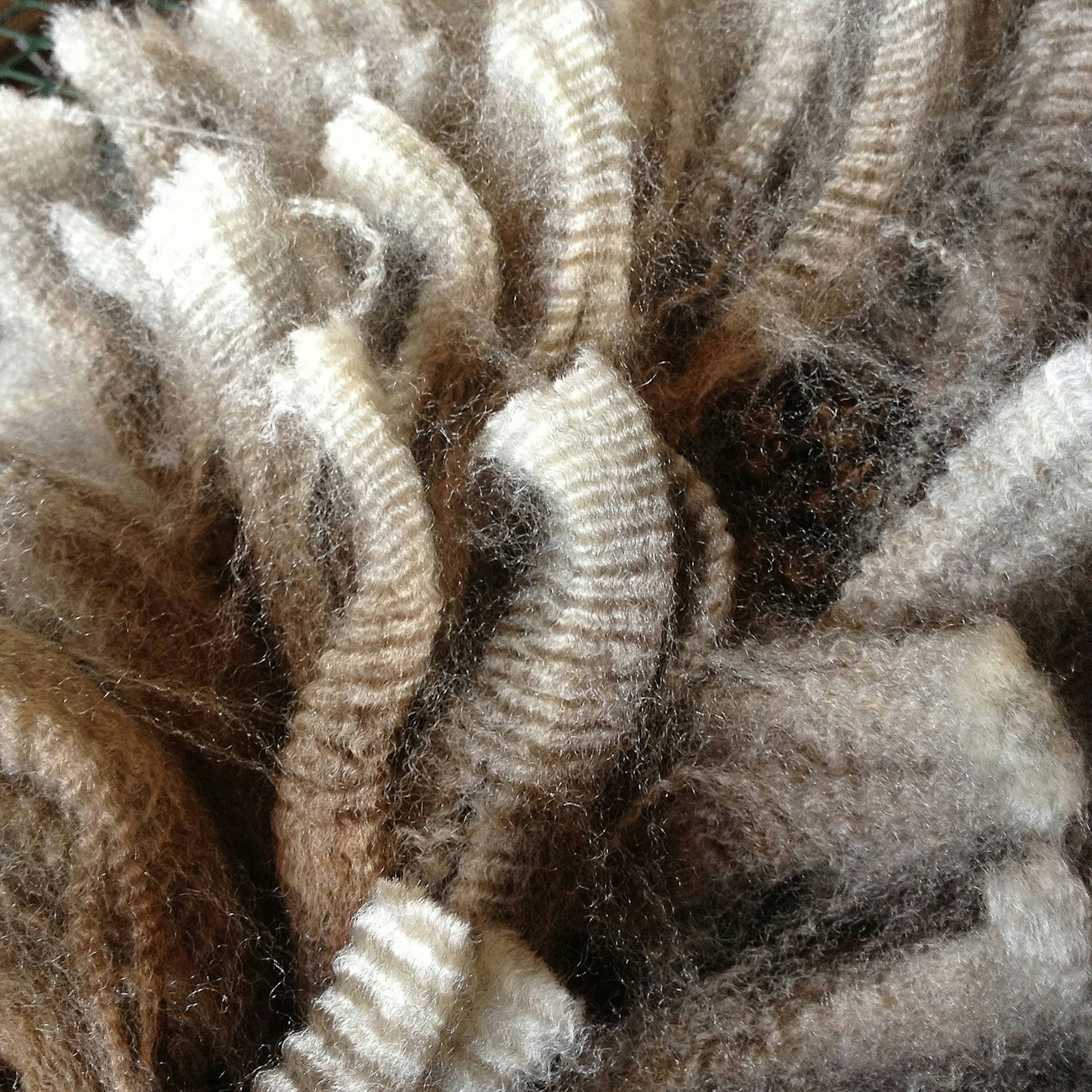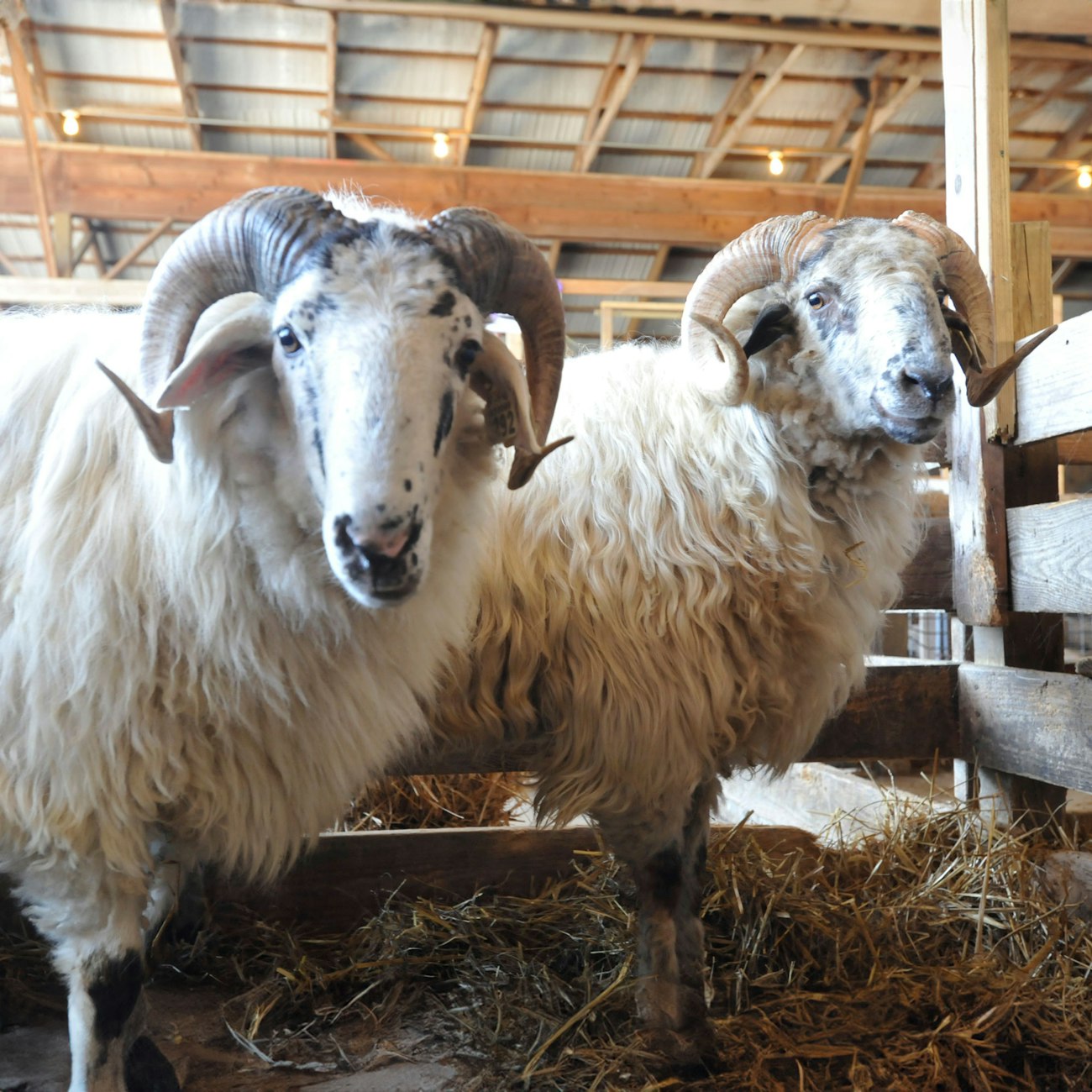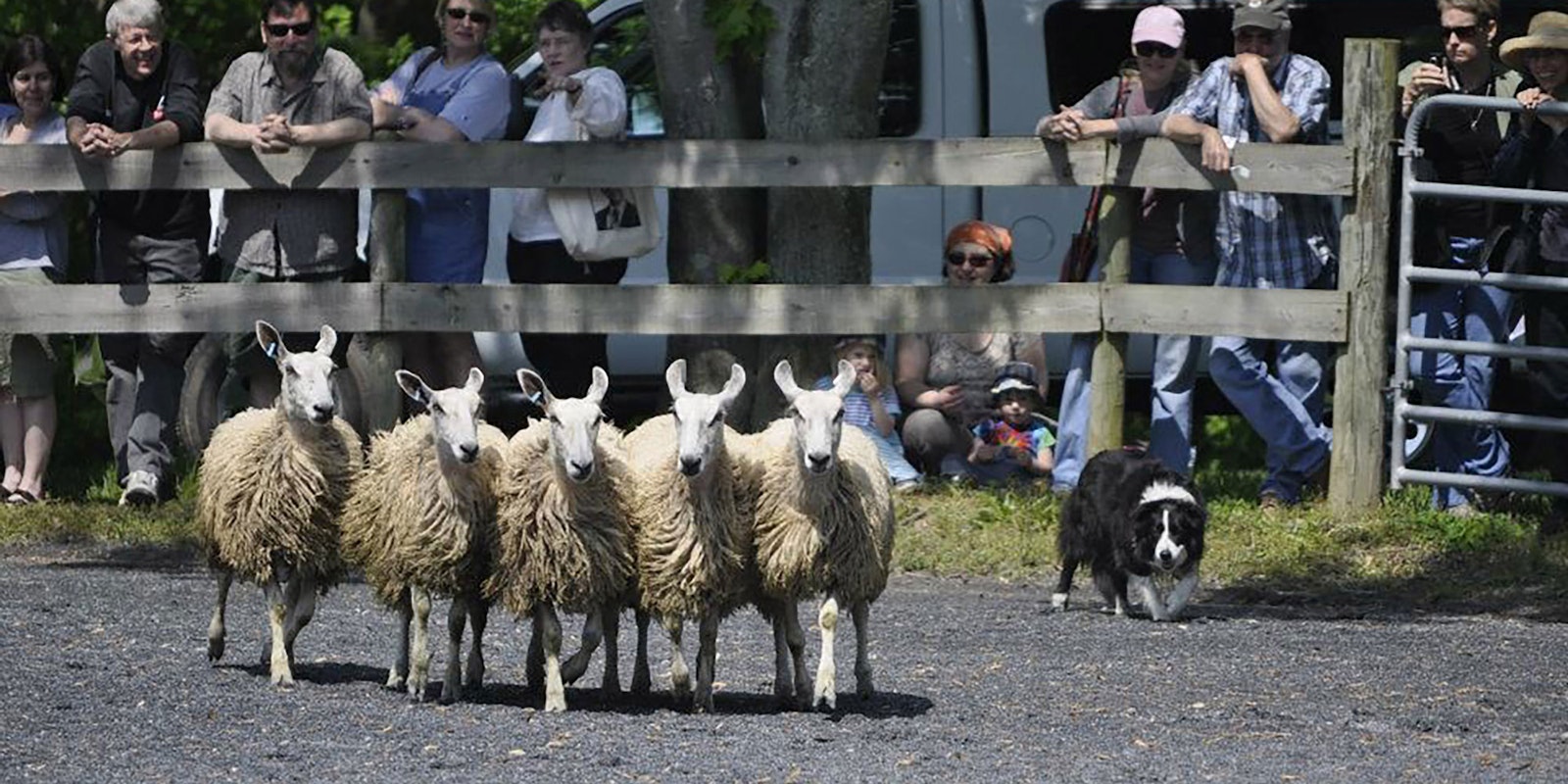On the first weekend in May, about 20,000 people and more than 750 sheep will gather at the Howard County Fairgrounds in rural Maryland for the 51st annual Maryland Sheep & Wool Festival. As the first major event on the annual fiber festival calendar, Maryland Sheep & Wool is a bucket-list destination for many knitters and other wool lovers. We wondered what it takes to produce a festival of this scale and quality.
Many Hands Make Light(er) Work
For the more than 100 volunteers on the Festival’s standing committees, planning and producing the festival is a year-round activity. Work on this year’s festival began as soon as the 2023 festival ended, with a reflection on what went well and what improvements were needed.
Booth space for vendors is highly prized. Returning vendors reserve their space for the following year as soon as the festival ends; new vendors apply through a juried process in hopes of securing a spot for the next year. Instructors for both the fiber arts workshops and the shepherding workshops are also secured early on. Every detail must be considered in advance, from updating the website and procuring tents and tables to scheduling the live musicians and coordinating with the local police for traffic control. An army of volunteers must be recruited, scheduled, trained, and managed to ensure a great experience for everyone at the festival.
For many years, attendance at Maryland Sheep & Wool was free. With the growth of the show and its expenses, the festival needed to begin charging for admission in 2017. This year, admission will be $15 per day for those over the age of 18. Admission is free for those under 18.
It's All About the Sheep
The Maryland Sheep & Wool Festival is the flagship event of the Maryland Sheep Breeders Association. The goal of the festival has always been to promote the appreciation of sheep and their wool. Since the beginning, the festival has focused on public education and creating an opportunity for Maryland shepherds sell their wool and connect with the community of wool lovers and users.
 Get up close and personal with raw fleece from many different sheep breeds at the fleece show and sale.
Get up close and personal with raw fleece from many different sheep breeds at the fleece show and sale.
The fleece show and sale at Maryland Sheep & Wool is a rare opportunity to examine a huge variety of different sheep breeds and their fleeces. Over 800 fleeces will be on display and available for sale. Where else can you see and touch raw wool from 35 different breeds of sheep? After an hour at the fleece show, you’ll approach the yarn in the vendors’ booths with new knowledge in your fingertips and a deeper appreciation for the yarn you buy.
To see the fleece still on the hoof, the show ring is the place to be. Unlike most agricultural shows, the sheep are shown in full wool, and 60% of the judge’s score is based on the fleece. When your feet tell you it’s time to sit down and take a break, find a spot on the ringside bleachers to watch the proud handlers show off their sheep. On Sunday afternoon, the show ring is the venue for the Parade of Sheep Breeds, where you’ll see rare and exotic sheep from around the world.
 Sheep in all sizes, colors, and horn configurations hang out in the barns waiting for you to visit.
Sheep in all sizes, colors, and horn configurations hang out in the barns waiting for you to visit.
Three Ways to Enjoy the Festival
1. Take a Class (or Two)
The Fiber Arts education program at Maryland Sheep & Wool features world-class instructors in fiber preparation, dying, felting, spinning, knitting, crochet, and weaving. Both half-day and full-day workshops are available. Most of the workshops are scheduled for Wednesday–Friday, so you’ll still have plenty of time to enjoy the festival events.
2. Enjoy Shopping Opportunities Galore
Over 250 vendors will set up their booths at the 2024 Festival. Some of our favorite fiber farms, yarn producers, and hand-dyers make the trip to Maryland every spring. You’ll find woodworkers selling handcrafted fiber tools and a wide variety of finished goods for sale, from pottery to fine art to skin care, all sharing the common thread of sheep and wool. You’ll even find a Festival Farm Market selling delicious treats to take home.
3. Bring Your Family
While you might hesitate to bring the kids to a hotel or convention center-based show, Maryland Sheep & Wool is designed to be family-friendly, beginning with free admission for those under 18. Even the youngest children will enjoy the sheep shearing and sheep dog demonstrations. For hands-on fun, the Family Activities Tents host a variety of kid’s craft classes.
You’ll hear music all day long at the festival. According to the festival website, “Bagpipes, harps, fiddles, whistles, flutes, mandolins, guitars, banjos, and hammered dulcimers ring throughout the Festival, reminding us that both music and wool have come down to us through the ages.”
Spinners, Take Your Marks
When asked what part of the festival knitters might tend overlook, festival manager Wistie Brown replied, “The Sheep-to-Shawl competition. This captivating event encapsulates the spirit of Maryland Sheep & Wool, showcasing the ingenuity and teamwork that represents so many parts of the fiber arts community.” Beginning with fleece still on the sheep at 8:00 am on Sunday, teams composed of 1 shearer, 3 spinners, and 1 weaver have 3 hours to create and present a finished shawl. With points awarded for team appearance as well as the quality of their craftsmanship, creative team costumes are the norm.
Thriving in a Post-Pandemic World
While many fiber shows are struggling, Maryland Sheep & Wool continues to grow. Wistie attributes that success to the community’s dedication and resilience. “Happy volunteers are the beating heart and positive energy of the festival, she says. “It’s their enthusiasm and willingness to do the work” that makes the festival thrive.
Sandi Rosner (she/her) learned to knit in the late 1970s from the instructions in the back of a magazine. She now works as a freelance designer, technical editor, writer, and teacher. When Sandi isn’t knitting, she usually has her nose in a book. Find more of Sandi’s work at www.sandirosner.substack.com.

